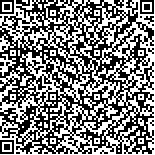刘洪举,邱智,朱思刚,等.不稳定支撑面核心稳定性训练对胸腰段骨折伴不完全性脊髓损伤患者步行和静态平衡能力的影响[J].中华物理医学与康复杂志,2020,42(8):716-721
扫码阅读全文

|
| 不稳定支撑面核心稳定性训练对胸腰段骨折伴不完全性脊髓损伤患者步行和静态平衡能力的影响 |
|
| |
| DOI:10.3760/cma.j.issn.0254-1424.2020.08.011 |
| 中文关键词: 核心稳定性训练 不稳定支撑面 胸腰段骨折 脊髓损伤 步行能力 静态平衡功能 |
| 英文关键词: Core stability training Unstable supporting surfaces Thoracolumbar fracture Spinal cord injury Ambulation Balance |
| 基金项目:贵州省卫生计生委科学技术基金项目(gwjkj2015-1-009) |
|
| 摘要点击次数: 5886 |
| 全文下载次数: 6084 |
| 中文摘要: |
| 目的 观察不稳定支撑面核心稳定性训练对胸腰段脊柱骨折伴不完全性脊髓损伤患者步行和平衡功能的影响。 方法 将胸腰段脊柱骨折并不完全性脊髓损伤患者40例按随机数字表法分成实验组和对照组,每组患者20例。2组受试者均接受卧位以及坐位下的核心稳定性训练,每日30 min,每周5 d,连续8周。实验组在不稳定支撑面上进行训练,对照组在稳定支撑面上进行训练。于治疗前和治疗8周后(治疗后)采用三维步态分析仪对患者的步行能力进行评估,采用Active Balance EAB-100平衡检测仪对患者的立位静态平衡功能进行评估。 结果 治疗后,实验组步态参数中的跨步长为(0.54±0.18)m,舒适步速为(0.33±0.23)m/s,均显著优于对照组治疗后,差异均有统计学意义(P<0.05)。实验组立位静态平衡参数中的轨迹长-Romberg率、外周面积-Romberg率、矩形面积-Romberg率、有效值面积-Romberg率、X轴移动重心中心偏差-闭眼均优于对照组治疗后,差异均有统计学意义(P<0.05)。 结论 不稳定支撑面核心稳定性训练可显著改善胸腰段骨折并不完全性脊髓损伤患者的步行能力,疗效优于稳定支撑面训练,其机制可能是不稳定支撑面核心稳定性训练可提高患者不依赖视觉反馈的立位姿势控制能力。 |
| 英文摘要: |
| Objective To explore the effect of conducting core stability training (CST) on an unstable supporting surface using thoracolumbar fracture patients with an incomplete spinal cord injury. Methods Forty thoracolumbar fracture patients with incomplete spinal cord injury were randomly divided into an experiment group and a control group, each of twenty. Both groups received 30 minutes of CST five times per week for 8 weeks. The patients in the control group were trained on a stable supporting surface while those in the experiment group used an unstable surface. Evaluations were conducted before and after the 8-week intervention. Gait and static balance data were collected and analyzed using 3D motion analysis software and an EAB-100 active balancer. Results After the intervention, the average stride length and comfortable walking speed of the experimental group were both significantly better than the control group′s averages. Moreover, the path length, circumferential area, rectangular area and effective value area of the Romberg rate were all significantly better, on average, in the experiment group, as was the average displacement of the deflection center with the eyes closed in static balance. Conclusions An unstable supporting surface is superior to a stable one for conducting CST after thoracolumbar fracture with incomplete spinal cord injury. The effect may be due to improved nonvisual postural control. |
|
查看全文
查看/发表评论 下载PDF阅读器 |
| 关闭 |